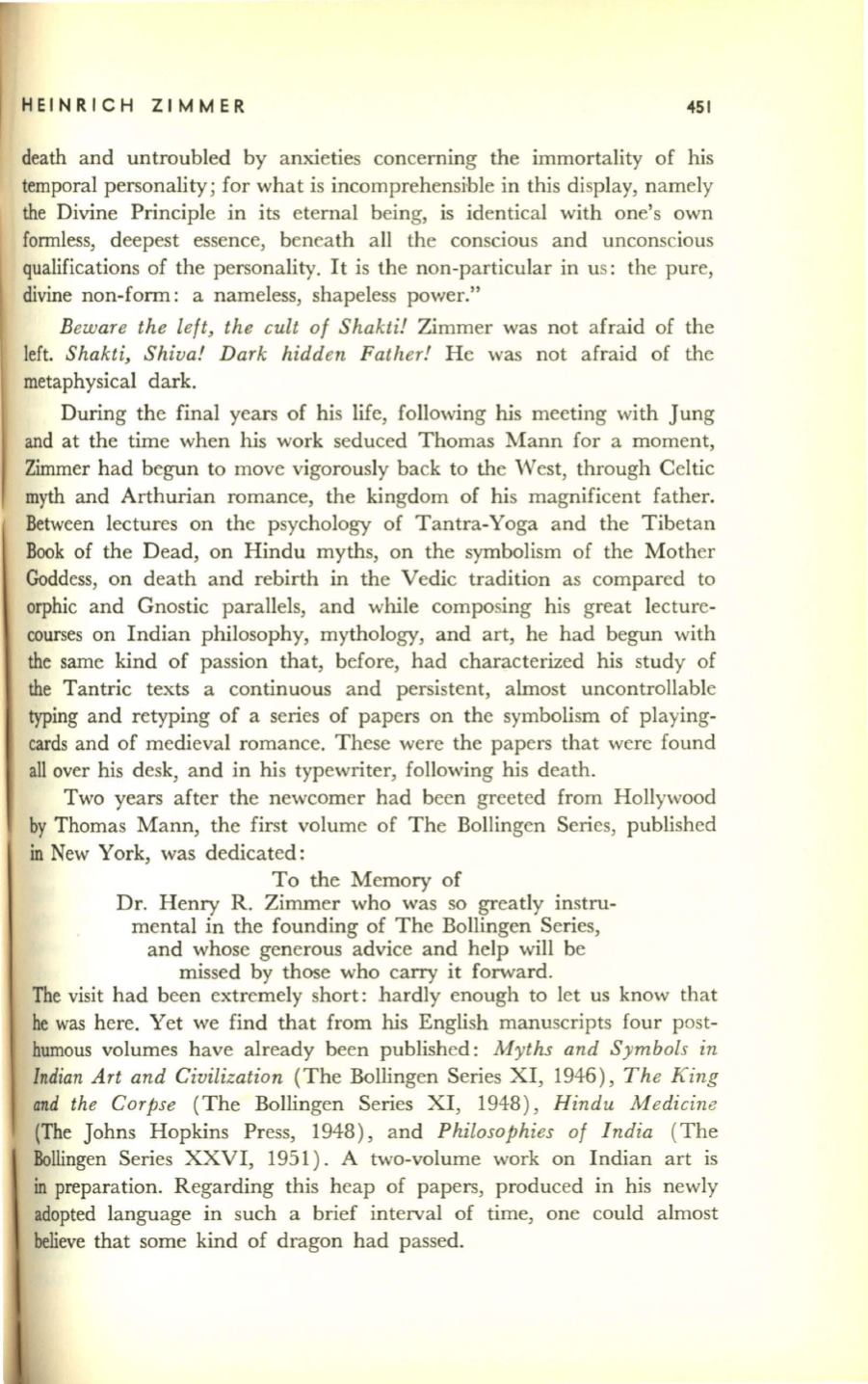
HEINRICH ZIMMER
451
death and untroubled by anxIeties concerning the immortality of his
temporal personality; for what is incomprehensible in this display, namely
the Divine Principle in its eternal being, is identical with one's own
formless, deepest essence, beneath all the conscious and unconscious
qualifications of the personality. It is the non-particular in us: the pure,
divine non-form: a nameless, shapeless power."
Beware the left, the cult of Shakti!
Zimmer was not afraid of the
left.
Shakti, Shiva! Dark hidden Father!
He was not afraid of the
metaphysical dark.
During the final years of his life, following his meeting with Jung
and at the time when his work seduced Thomas Mann for a moment,
Zimmer had begun to move vigorously back to the West, through Celtic
myth and Arthurian romance, the kingdom of his magnificent father.
Between lectures on the psychology of Tantra-Yoga and the Tibetan
Book of the Dead, on Hindu myths, on the symbolism of the Mother
Goddess, on death and rebirth in the Vedic tradition as compared to
orphic and Gnostic parallels, and while composing his great lecture–
courses on Indian philosophy, mythology, and art, he had begun with
the same kind of passion that, before, had characterized his study of
the Tantric texts a continuous and persistent, almost uncontrollable
typing and retyping of a series of papers on the symbolism of playing–
cards and of medieval romance. These were the papers that were found
all over his desk, and in his typewriter, following his death.
Two years after the newcomer had been greeted from Hollywood
by Thomas Mann, the first volume of The Bollingen Series, published
in
New York, was dedicated:
To the Memory of
Dr. Henry R. Zimmer who was so greatly instru–
mental in the founding of The Bollingen Series,
and whose generous advice and help will be
missed by those who carry it forward.
The visit had been extremely short : hardly enough to let us know that
he was here. Yet we find that from his English manuscripts four post–
humous volumes have already been published:
Myths and Symbols in
Indian Art and Civilization
(The Bollingen Series XI, 1946),
The King
and the Corpse
(The Bollingen Series XI, 1948),
Hindu Medicine
(The Johns Hopkins Press, 1948), and
Philosophies of India
(The
Bollingen Series XXVI, 1951). A two-volume work on Indian art is
in
preparation. Regarding this heap of papers, produced in his newly
adopted language in such a brief interval of time, one could almost
believe that some kind of dragon had passed.


